INSIDE ISSUE 19.18 | May 1, 2020
 BIG STORY: More remote workers are in state’s future
BIG STORY: More remote workers are in state’s future
NEWS BRIEFS: House, Senate look to wrap up unfinished legislative session
COMMENTARY, Brack: Legislators wasted two months of 2020 session
SPOTLIGHT: Conservation Voters of South Carolina
FEEDBACK: Incumbents should be nervous
MYSTERY PHOTO: Pretty white church
S.C. ENCYCLOPEDIA: Pretty white church
BIG STORY: More remote workers are in state’s future
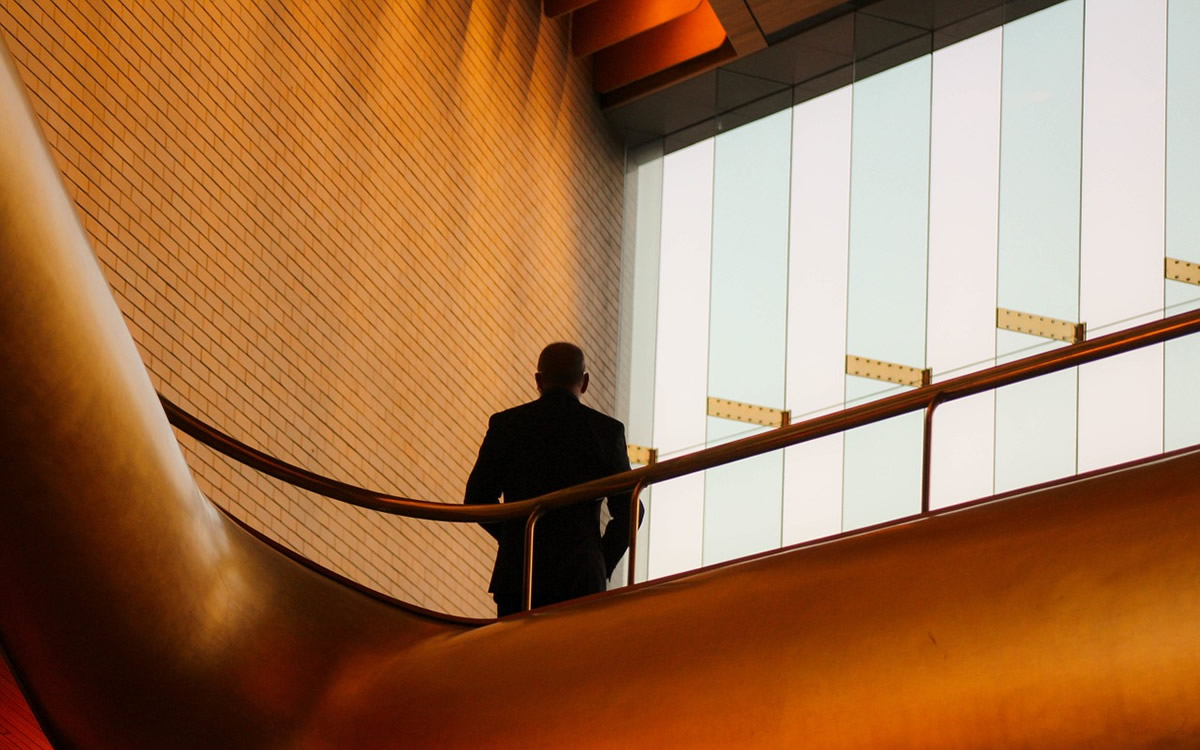
By Lindsay Street, Statehouse correspondent | Nearly one-in-three workers in South Carolina are now working from home. It’s a dramatic change that will have big consequences: As the state begins allowing in-person businesses to operate in the coming weeks, public and private employees may continue with work-from-home options, either to maintain social distancing or because it lowers overhead.

“Some companies are not necessarily encouraging employees working from home to come back into the office,” said Joey Von Nessen, research economist at the Darla Moore School of Business. “If they have been able to successfully transition to working from home and maintain productivity levels then, from an employer perspective, it may make sense to continue that.”
The marked wholesale increase in working from home in the state has also affected the state’s use of roads, electricity and buildings.
Prior to state-level sheltering-at-home mandates to slow infection from coronavirus, national experts said 29 percent of workers could potentially work from home — doubling or tripling the pre-pandemic remote workforce. Now if a position allows employees to work from home, they likely have made the transition in South Carolina, according to Von Nessen said.
He said the 29 percent figure was conservative.
According to the S.C. Department of Administration, 76 percent of state employees are now working from home. State government, like private industry, is currently evaluating more remote workers in what is becoming a new normal.
“As restrictions are slowly lifted, the South Carolina Department of Administration anticipates that working from home will continue for a period of time, at a level higher than the levels that existed prior to the pandemic,” spokesman Kelly Coakley said in a statement. “Admin will continue to work closely with agencies to develop staffing plans that are tailored to the mission and operational needs of each agency, while promoting the safety of employees.”
Von Nessen said companies in professional services are most likely to have their employees successfully transition to working from home. He said much of that work is based in Columbia and the Rock Hill areas, both of which have seen “less disruption as a result of the pandemic.”
Von Nessen, known for his annual predictions for the state’s economy, said he’s hesitant to predict where work-from-home goes from here.
“There’s so much uncertainty in terms of what’s going to be happening because things can turn on a dime if we see a successful treatment that becomes available for COVID-19,” he said, adding that it will also depend on how long the pandemic keeps people at home. “The length of time we see this disruption exist will affect how we see any lasting changes that result from it.”
Here’s a look at some of the changes already experienced by a larger share of the workforce staying home.
Traffic changes
From March 23 to April 24, traffic decreased on South Carolina roads by more than 40 percent because more people worked from home, were laid off or just stopped driving as much, according to the S.C. Department of Transportation (SCDOT).
But that doesn’t mean the state’s roads got a break.
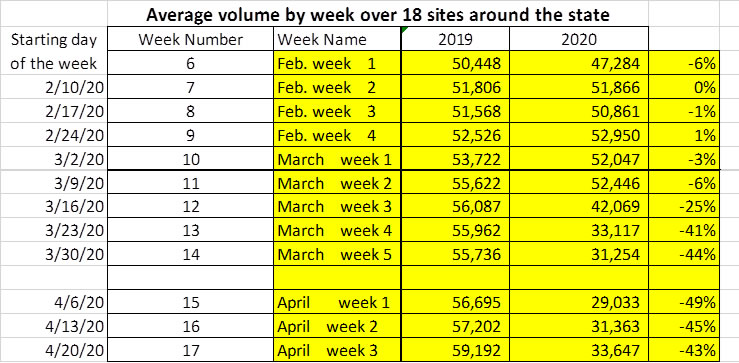
“The factors that influence wear and tear are more closely aligned to vehicle weights and stopping and starting motions on the highways,” Transportation Secretary Christy Hall told Statehouse Report this week.
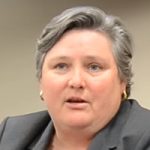
“While there have been fewer passenger vehicles on S.C. roads in the recent weeks, tractor-trailers have been allowed to carry heavier loads (per the emergency orders that increased the weight limits) and we have indicators that traffic volumes in the urban areas have been a little busier than the statewide averages (roughly about 10-15 percent higher).”
Hall said the biggest impact on state roads during the lockdown was reduced traffic levels allowing “greater mobility across the state.”
“If this trend were to continue, it would mean less of a demand for very expensive highway-widening projects,” she said. SCDOT allocates about $500 million annually on projects intended to relieve congestion.
Office changes
David Feild, president of Colliers International’s Greenville and Spartanburg market, said just how an accelerated work-from-home workforce could alter real estate demand is a “speculative conversation a lot of people are having right now.”

Feild said companies may shift to smaller spaces, but still retain some office space. For example, a large company could move into a medium company’s office space. But, he said, it’s also likely that social distancing guidelines could change per-person square footage needs, so even though some workers remain at home, a company could retain the same office space to allow for more room.
He said he expects there will also be a change in office layouts.
“This is another example of a change that will impact office space,” Feild said. “It’s an evolution, no different from previous evolutions. This one just came about a little faster and more wholesale.”
Public office space has a target density of 210 square-feet per person, according to the S.C. Department of Administration. If more people worked from home in state government, then it would consolidate state-owned or commercial space to continue to meet that density, Coakley said.
This has the potential for altering state expenses. Public buildings have $103 million in deferred maintenance costs and an annual expenditure of $22 million for maintenance and operations, according to the agency.
Energy changes
State-owned Santee Cooper reported March’s energy use was down 3 percent from 2019’. While some of that is from decreased commercial demand during the work-or-home order, spokesman Mollie Gore said the mild winter and spring could also be a contributing factor. April’s numbers, due by the second week of May, will provide a better picture of impact, she said.
But overall, the utility — which serves power to nearly 2 million South Carolinians — saw an increase in residential use as manufacturing and commercial use declined, Gore said.
- In New York City, during the height of their lockdown, The New York Times found a 7 percent increase for home consumption of energy. Read more.
Gore said the utility is just beginning to look at what “return to work” looks like in the coming weeks, and that it will start to look at the altering workforce customers in the months to come. She added that this is why the utility has begun to focus on diversifying energy that can be added incrementally and adjusted based on need, such as solar and natural gas investments.
- Have a comment? Send to: feedback@statehousereport.com
House, Senate to wrap up unfinished legislative session
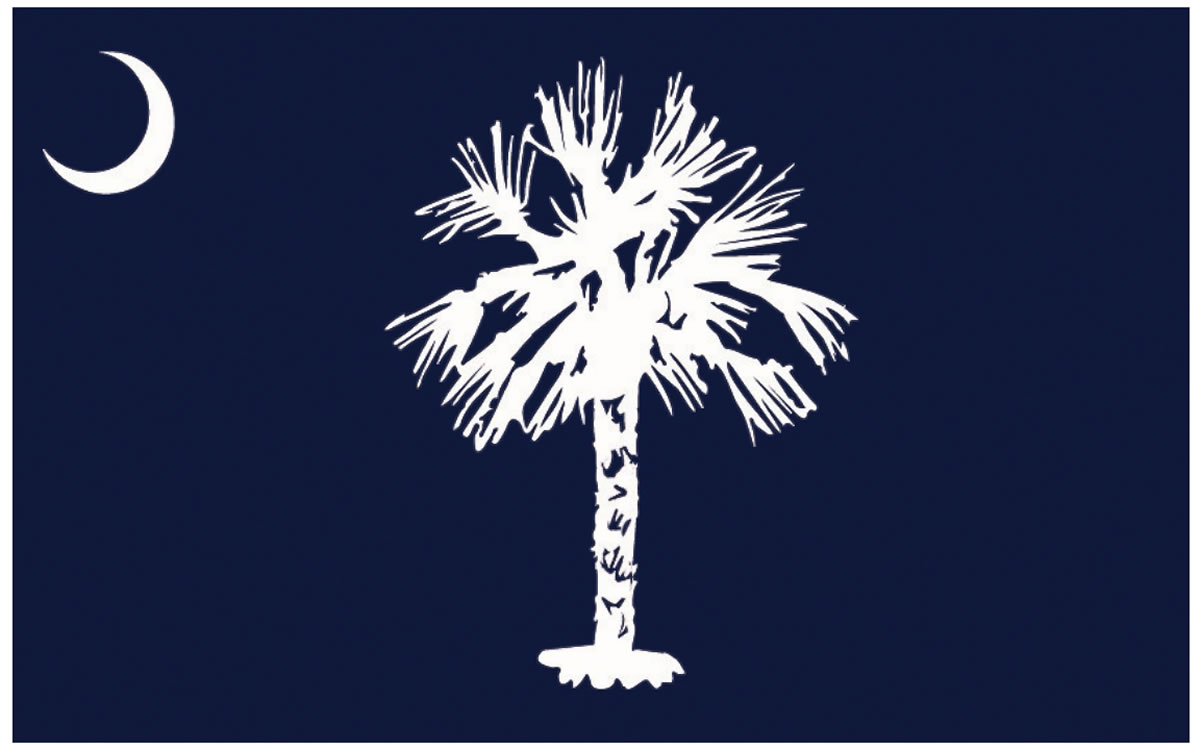
By Lindsay Street, Statehouse correspondent | The legislature is readying to convene for the first time since April 8, and just three work days before the official end of session.
Today, the Senate tested meeting virtually via Zoom, and a Joint Bond Review Committee will be held virtually at 10:30 a.m. May 6.
But the House and Senate have plans to meet in-person beginning noon May 12, just days before the May 14 end of session, according to a statement from the House Speaker’s office.
The House will meet each of the three days leading up to the deadline, according to House Clerk Charles Reid in a Thursday email to House members.
House Speaker Jay Lucas issued a statement Thursday saying the House intended to take up the continuing resolution to fund the government at 2019-2020 levels past the June 30 end of fiscal year, and the sine die resolution, which would allow the legislature to reconvene at a later time. Both measures were the sole focus of the April 8 meeting, but debate over language that barred state-owned utility Santee Cooper from entering long-term contracts including in the continuing resolution derailed passage. Each body passed similar versions, and now one body must concur with the other body’s bills.
According to Reid’s email to lawmakers, the Blatt building and the House chamber will be restricted to staff and members. The public will not be allowed access to either. Members of the media will be allowed access to the chamber. Committees and subcommittees will not convene, Reid said.
May 14 is also scheduled for a meeting of the state Board of Economic Advisers, which forecasts state revenue for the budget. According to Reid’s email, the session could be extended by two weeks if that meeting results in a revenue forecast reduction.
In other news:
![]() South Carolina could see new version of famous state flag. A new report is giving guidance to state lawmakers to codify the state flag. The last time South Carolina had an official state flag, it was repealed in 1940. For 80 years, the state’s flag has been up to interpretation by flag manufacturers. “South Carolina’s state flag has been voted one of the most beautiful. It’s beautiful for its simplicity. It’s always been high in the ranking for vexillologists,” said S.C. Department of Archives and History Director Dr. Eric Emerson, who chaired the committee that wrote the report. “This one thing that represents us more than anything else should be codified.” Like the repealed 1910 version, the latest version is based on a pencil sketch by Ellen Heyward Jervey of Charleston. Read the report here.
South Carolina could see new version of famous state flag. A new report is giving guidance to state lawmakers to codify the state flag. The last time South Carolina had an official state flag, it was repealed in 1940. For 80 years, the state’s flag has been up to interpretation by flag manufacturers. “South Carolina’s state flag has been voted one of the most beautiful. It’s beautiful for its simplicity. It’s always been high in the ranking for vexillologists,” said S.C. Department of Archives and History Director Dr. Eric Emerson, who chaired the committee that wrote the report. “This one thing that represents us more than anything else should be codified.” Like the repealed 1910 version, the latest version is based on a pencil sketch by Ellen Heyward Jervey of Charleston. Read the report here.
“The funds are here:” Federal relief in state coffers. S.C. Department of Administration Executive Budget Director Brian Gaines told lawmakers and business CEOs Monday that federal relief for state and local governments is available and funds will “start rolling out as expeditiously as possible.” The federal funds cannot replace revenues lost by governments, and are only to be used for “direct reimbursements” related to the pandemic or its prevention from March 1 until Dec. 31, Gaines said. About $91 million will go to Greenville County, which meets the criteria of direct federal aid by having a population more than 500,000. That leaves $1.01 billion for Gaines to coordinate along with the AccelerateSC resource subcommittee. The state will reserve 45 percent for local entities with any balance left over going back to the state, and 55 percent reserved for state government, Gaines said.
South Carolina’s poorest families pay 35% of income for higher education. Families in need in South Carolina pay 35 percent of their income to pay for educational expenses for a full-time student at a four-year institution, and 15 percent of their income for a two-year institution, according to a new report from Southern Regional Education Board. SREB is a 16-state membership nonprofit that seeks to improve public education.
Bring your own pen for in-person absentee voting. State election officials said South Carolinians can begin absentee voting Monday, and that they recommend voters bring their own pens to sign in. Election officials told Statehouse Report they expect record absentee voting. South Carolina allows more than a dozen reasons to vote absentee, including having to work on election day and being over the age of 65. Avoiding a virus is not one of the reasons allowed. Read more about absentee voting here, including a list of all allowed reasons for voting absentee.
- Have a comment? Send to: feedback@statehousereport.com
Friends and readers,
 We’re proud to offer Statehouse Report for free. For more than a dozen years, we’ve been the go-to place for insightful independent policy and political news and views in the Palmetto State. And we love it as much as you do.
We’re proud to offer Statehouse Report for free. For more than a dozen years, we’ve been the go-to place for insightful independent policy and political news and views in the Palmetto State. And we love it as much as you do.
But now, we can use your help. If you’ve been thinking of contributing to Statehouse Report over the years, now would be a great time to contribute as we deal with the crisis. In advance, thank you.
— Andy Brack, editor and publisher
BRACK: Legislators wasted two months of 2020 session
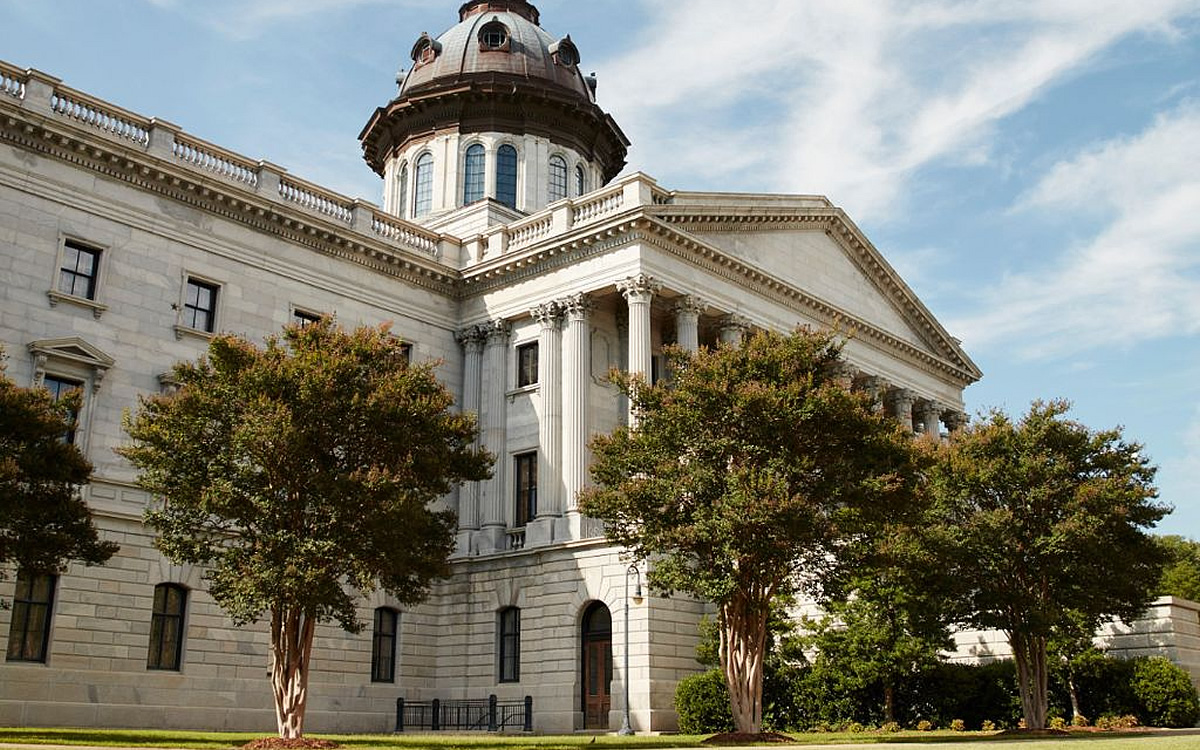
By Andy Brack, editor and publisher | With Americans burning up Zoom to conduct business meetings online and keep up with what’s happening in this year of an invisible enemy, you’ve got to wonder why state lawmakers mostly wasted the 2020 legislative session.
 By cutting class for two months due to the novel coronavirus, they missed big opportunities to deal with Santee Cooper’s future, state pension shortfalls, teacher pay, educational improvement, the problems of vaping, gun loopholes, opioids and tax reform. The list drags on.
By cutting class for two months due to the novel coronavirus, they missed big opportunities to deal with Santee Cooper’s future, state pension shortfalls, teacher pay, educational improvement, the problems of vaping, gun loopholes, opioids and tax reform. The list drags on.
Now we hear they’ll be back May 12, but the likelihood of much really getting done besides passing a budget roiled by coronavirus costs is next to nothing.
It shouldn’t have been this way. Technology offers a safe, transparent meeting platform that can be monitored by any citizen if aired on SCETV, just like regular meetings are.
In mid-March, members of the state House of Representatives went on an annual short furlough after passing a $9.8 billion state budget that included $1.8 billion in surpluses. The state Senate stopped gathering about the same time. Other than an April 8 meeting that failed to accomplish much of anything, they stayed home, thanks to a March 23 coronavirus executive order keeping three or more people from meeting at one time.
So what’s a legislature to do? It could have adapted technologically and plodded on. Surprised that it didn’t? In South Carolina?
Our state constitution outlines where the legislature is supposed to meet: “Each body shall sit in session at the State Capitol Building in the City of Columbia and may provide for meetings during the legislative session as it shall consider appropriate.”
But back in the late 1990s, lawmakers bypassed that constitutional requirement by meeting in the old Carolina Inn across the street from the capitol as it was undergoing a long renovation.
Former state Senate Clerk Frank Caggiano recalls there was no constitutional work-around to move across the street temporarily.
“We just did it,” he said. “If anything was passed, I am unaware of it.” And he should know because he was part of the management team of the project, which he said lasted 777 days.
“I don’t know what we could have passed, other than another constitutional amendment. I don’t believe the General Assembly could have passed anything to meet in another physical location.”
The constitution, in fact, includes a mechanism that provides a work-around for meeting locations: “If the casualties of war or contagious disease render it unsafe to meet at the seat of government, the Governor, by proclamation, may appoint a more secure and convenient place of meeting.”
Did you see that part about “contagious disease?” In a 2020 context, one could easily read the constitution as permitting safe meetings through the use of technology never envisioned when the state constitution was originally written back in 1895.
Or as Caggiano suggested, “Not to be cutesy about it, but if the technology and the equipment that hosted the [online] meeting were located physically in the Statehouse, one could argue you might be technically meeting the terms of the constitution.”
Bottom line: State lawmakers may not have to meet physically at the Statehouse to conduct business. But they obviously think they do, which conjures images of lots of stuffed shirts flanked by face masks and plastic gloves as the House and Senate chambers turn into something that looks like a bank robbers’ convention.
Senate President Harvey Peeler. R-Cherokee, and House Speaker Jay Lucas, R-Darlington, announced Thursday, “While the pandemic did not permit us to continue to meet as normal, the job of this legislature will not be left unfinished. Now, more than ever, the needs of the citizens of this state must be addressed and met.
“While the state pursues reopening, we must stand poised to get back to work. In order to do our work in a timely manner, it is imperative we work together as fellow legislators and fellow South Carolinians. Leadership in both chambers recognizes the importance of this partnership.”
Hold onto your hats. Let’s hope they don’t rush to judgment on two month’s of work set aside when it shouldn’t have been.
- Have a comment? Send to: feedback@statehousereport.com.
Conservation Voters of South Carolina
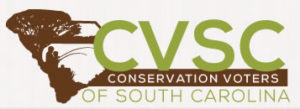 The Conservation Voters of South Carolina is a statewide nonprofit organization that fights for the Palmetto State’s air, water, land and energy through political action. The organization is bipartisan, pragmatic and effective.
The Conservation Voters of South Carolina is a statewide nonprofit organization that fights for the Palmetto State’s air, water, land and energy through political action. The organization is bipartisan, pragmatic and effective.
Through scorecards and advocacy at the Statehouse, CVSC holds South Carolina legislators accountable for their votes and actions. As a small organization that operates as a nonprofit and has a political action committee, we have a big impact. Learn more today by clicking any of the links below:
- CVSC Legislative Scorecards
- CVSC Issues
- CVSC News
- How to take action with CVSC
Incumbents should be nervous
To the editor:
![]() Thank you for your doubletalk column this morning in our local paper.
Thank you for your doubletalk column this morning in our local paper.
To me there have been givens during this crisis. Politicians are what they are and are campaigning either for themselves or someone else every time they open their mouths. Politicians have no clue about medicine, science or really what is good for the people. Politicians maybe don’t even care about what is good for the people as long as they win the next election, promote their agendas and look good despite needing a haircut.
President [Trump] loves bragging about himself. Governor McMaster loves being governor but he is still a horrible public speaker. At the end of the day, governments of all shapes and sizes care about money, first and foremost.
The beauty of our country is we get a chance to vote and incumbents at every level, all over the country, should be very nervous. The tragedy of our country is that far too often incumbents have no qualified opponent or no opponent at all. We can do better.
— Andy Sullivan, Honea Path, S.C.
What do you think?
We love hearing from our readers and encourage you to share your opinions. But you’ve got to provide us with contact information so we can verify your letters. Letters to the editor are published weekly. We reserve the right to edit for length and clarity. Comments are limited to 250 words or less. Please include your name and contact information.
- Send your letters or comments to: feedback@statehousereport.com
Pretty white church
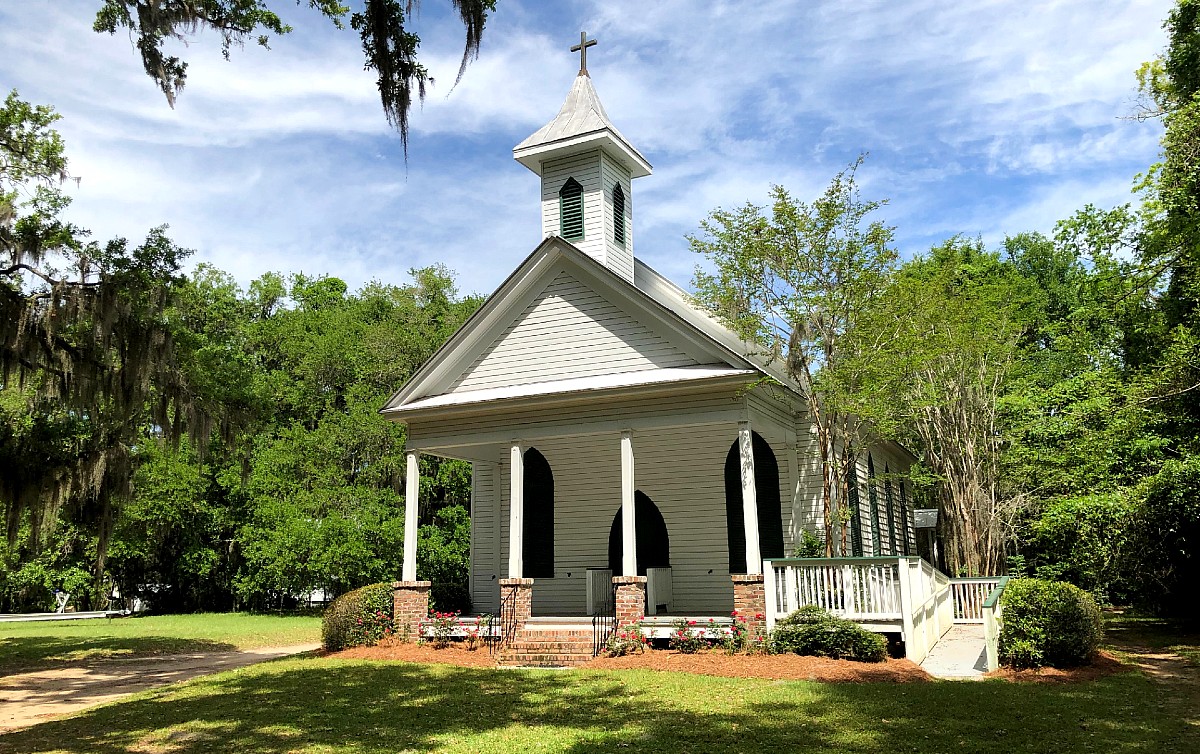
Here’s a pretty white church somewhere in South Carolina. But where? Send your best guess to feedback@statehousereport.com. And don’t forget to include your name and the town in which you live.
Our previous Mystery Photo
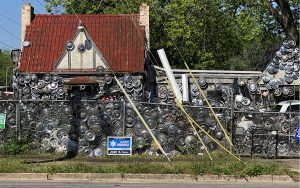 Our April 24 image, “Highly decorated,” was highly recognized by many who have driven through downtown Florence. The photo, provided by longtime Florence reader Barry Wingard, shows Mel’s, a hubcap-shrouded tire store at the corner of Coit and Darlington streets.
Our April 24 image, “Highly decorated,” was highly recognized by many who have driven through downtown Florence. The photo, provided by longtime Florence reader Barry Wingard, shows Mel’s, a hubcap-shrouded tire store at the corner of Coit and Darlington streets.
Congratulations to all of these eagle-eyed photo detectives: George Graf of Richmond, Va.; Will Bradley of Las Vegas, Nevada; Jane Hart Lewis and Jacie Godfrey, both of Florence; Jay Altman, Anthony Lofton and Mark Barnes, all of Columbia; David Lupo of Mount Pleasant; Bill Segars and Don Clark, both of Hartsville; Frank Bouknight of Summerville; Rebecca Hopkins of Charleston; Edward Tinsley of North Myrtle Beach; and Dave Taylor of parts unknown.
Bradley noted, “It is covered with hubcaps because the owner had many of them fall off in front of his store from cars hitting the railroad track crossing while traveling north on Coit Street!” Altman added that the shop opened in 1978 when Melvin Lee Wright Sr. moved from Chicago to Florence. Godfrey said the shop once was a Pure gas station.
Send us a mystery: If you have a photo that you believe will stump readers, send it along (but make sure to tell us what it is because it may stump us too!) Send to: feedback@statehousereport.com and mark it as a photo submission. Thanks.
Catawbas
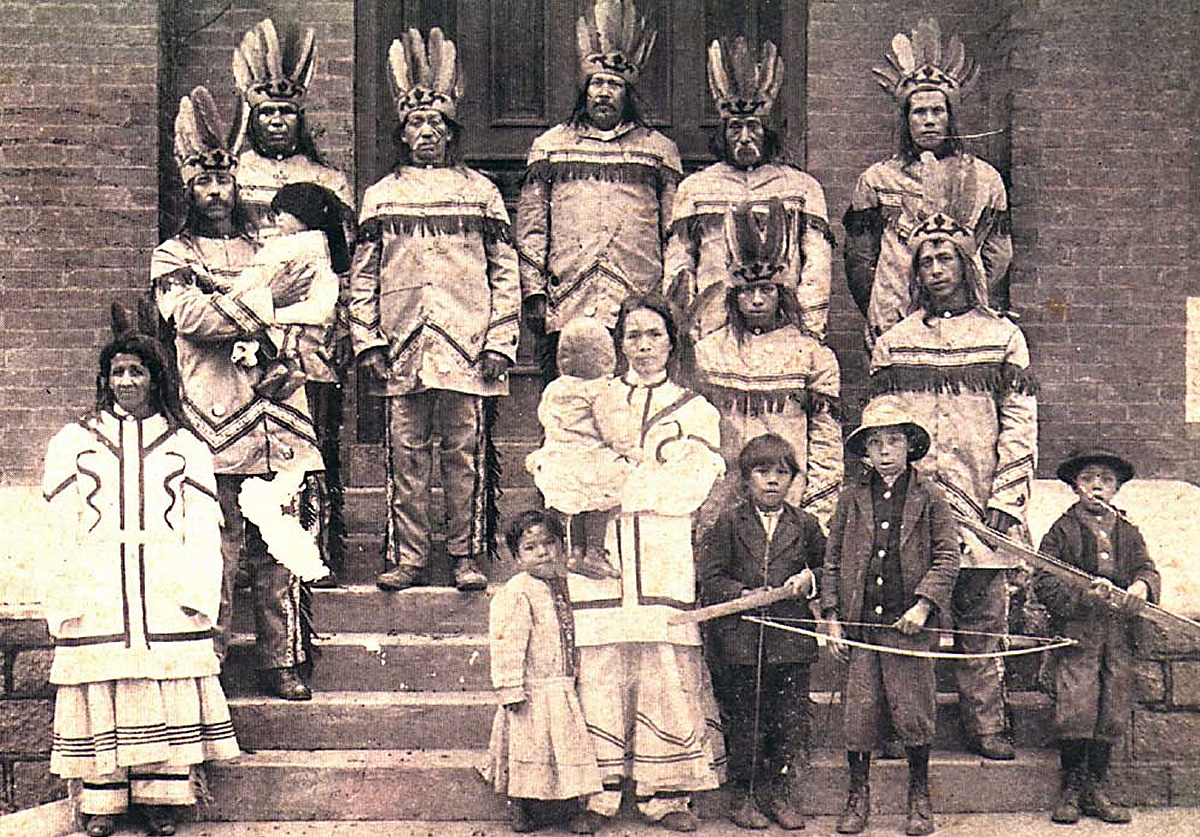
Catawba legend relates that the tribe arrived in South Carolina, near present-day Fort Mill, from the north a few hundred years before European contact. The first recorded contact with these people was by Hernando de Soto in 1540. There is no known origin for the name Catawba, as the members called themselves “Ye Iswa,” meaning “the people of the river,” but the name was in common usage by the beginning of the eighteenth century. The Catawbas were ferocious warriors feared not only by neighboring tribes but also by Indian nations to the north. For years the Catawbas and the nations of the Iroquois Confederation had traveled back and forth along the Appalachian trails to raid each other’s towns. However, when the British arrived, the Catawbas befriended their new neighbors, and a strong trade alliance began. That alliance led the Catawbas to fight alongside the British in the French and Indian War and the Cherokee War. Despite this history of alliance with the British, however, the Catawbas supported the patriot cause during the Revolutionary War. In return for their alliance in the French and Indian War, King George III in the 1763 Treaty of Augusta ceded the Catawba tribe of South Carolina a tract of land “fifteen miles square” comprising approximately 144,000 acres.
European settlers began moving onto the Catawba reservation sometime before the Revolutionary War. One of the first European settlers among the Catawbas was Thomas “Kanawha” Spratt II, who settled on the land near present-day Fort Mill about 1761. Though Spratt got along well with his Catawba neighbors, he soon began selling parcels of land that he had leased from the Catawbas. Within a few years, almost all of the most fertile tracts within the reservation had been leased to English colonists. In 1782 the Catawbas petitioned Congress to secure their land so that it would not be “Intruded into by force, nor alienated even with their own consent.” Not wanting to deal with the tribe, Congress the following year passed a resolution stating that the British title over the Catawba Nation had passed into the hands of South Carolina. Congress recommended that South Carolina “take such measures for the satisfaction and security of the said tribe as the said legislature shall, in their wisdom, think fit.” Thus, the Catawba Nation became the beneficiary of a trust relationship with the state of South Carolina rather than with the United States.
Settlers continued to invade Catawba lands. By the early 1800s virtually all of their remaining land had been leased out. The non Indian leaseholders worried about the permanence of their leases, so in 1838 Governor Patrick Noble authorized commissioners to enter into negotiations with the Catawbas for the sale of their land. The Catawbas were willing to part with full title if the state provided enough money for land acquisition near the Cherokees in North Carolina. In 1840 the Catawba Nation and the state of South Carolina entered into the Treaty of Nation Ford, which provided that the Catawbas would cede the land granted to them under the Treaty of Augusta in 1763 in return for a tract of land of approximately three hundred acres in North Carolina; if no such tract could be procured to their satisfaction, they were to be given $5,000 by the state. The commissioners further promised that the state would pay the Catawbas $2,500 at or immediately after the time of their removal and $1,500 each year thereafter for the space of nine years.
Unfortunately, in its haste to remove the Catawbas, South Carolina had neglected to secure North Carolina’s permission to have the Catawbas moved to the Cherokee reservation. When the permission was belatedly requested, North Carolina refused. Some Catawbas journeyed to the Cherokee reservation and did reside there for a time; however, old tribal jealousies and the stress suffered by the remaining Cherokees as a result of the Trail of Tears tragedy prevented them from making a permanent home with the Cherokees. Eventually most of the Catawbas found themselves back on their former soil but without land or money. The settlement of $2,500 and the annual payment of $1,500 promised them under the 1840 treaty were withheld by the state because the Catawbas had returned to the ceded land. The plight of the Catawbas led the South Carolina Indian agent Joseph White in 1843 to secure for them a tract of 630 acres near the center of the “Old Reservation.”
South Carolina and the United States continued to try to rid themselves of the “Catawba problem.” Congress appropriated money in 1848 and again in 1854 in an effort to remove the Catawbas west of the Mississippi. Conflict between South Carolina and the tribe over the provisions of the Treaty of Nation Ford continued until 1905, when the Catawbas launched a legal battle to recover their lands.
The Catawba tribe, unlike many eastern bands, was able to maintain its internal cohesiveness and social identity throughout the nineteenth century despite the lack of federal or state protection. In 1911 Charles Davis of the Bureau of Indian Affairs reported that, in his opinion, the four leading factors in maintaining tribal identity were size, tribal organization, religion, and character. The tribe was small at that time, consisting of only ninety-seven individuals recognized by South Carolina as living on or near the Catawba reservation. Since the tribe had not intermarried much with their white neighbors and virtually not at all with their black neighbors, according to one observer, “[t]he large majority are so nearly full blood as to retain the Indian characteristics, and by reason thereof they have retained their tribal life and organization.” During the twentieth century there was more intermarriage with non-Indians, which affected the physical characteristics of the tribal members but not their Indian status. Because the Catawba membership rolls have been based on “descendancy” rather than “blood quantum,” as found among the western tribes, intermarriage with non-Indians did not affect the legally recognized Indian status of the Catawba children.
Religion also affected internal cohesion. Most members of the Catawba tribe converted to the Mormon religion in the 1880s, and as late as the 1950s the majority of the tribe still affiliated with the Mormon Church. The double minority status of tribal members (race and religion) tended to bind them together against the outside world. In the bipolar racial world of South Carolina during the era of segregation, Catawba Indians felt themselves ostracized, not considering themselves “black” but not being accepted as “white” (South Carolina census takers in the early twentieth century listed Catawba Indians as “black” because they had no category for Indian). As Mormons among a population of Baptists, Methodists, and Episcopalians, the Catawbas were further marginalized. Ironi- cally, it was this isolation and marginalization that helped to insure the tribal identity of the Catawbas. Banned from attending the white schools and refusing to attend the black schools, the Catawbas erected, with the help of the Mormon Church, a school on the reservation, another factor that helped retain their community.
In 1934 the South Carolina General Assembly passed a resolution recommending that the care and maintenance of the Catawba Indians should be transferred to the United States government. However, it was not until 1943 that a Memorandum of Understanding was signed between the tribe, the state, and the U.S. Department of the Interior. South Carolina acquired 3,434 acres of farmland for a federal reservation and conveyed it to the department secretary. The tribe adopted a constitution under the Indian Reorganization Act, and the federal government assumed its trust responsibility over tribal affairs.
Federal recognition of the Catawbas was short-lived. In keeping with the federal government’s overall termination philosophy instituted in 1953, both federal and state authorities approached the Catawbas in 1958 with a proposal for termination. The Bureau of Indian Affairs assured the Catawbas that their long-standing land claim against the state of South Carolina based on the Treaty of Augusta and the Treaty of Nation Ford (which still had not been resolved) would be unaffected by the termination. In 1962 the federal trust relationship between the United States and the Catawba tribe was terminated, and the 3,434-acre federal reservation was divided up and distributed to tribal members. South Carolina continued to hold the 640-acre tract from the 1840 treaty in trust for the tribe. At the time of termination there were 631 enrolled tribal members.
The activism of the American Indian Movement (AIM) in the early 1970s served to reignite the determination of the Catawbas— and many other tribes—to reinstitute their land claim. The tribe contacted the Native American Rights Fund (NARF), and in 1976 papers were filed with the Department of the Interior to recover the land recognized under the 1763 Treaty of Augusta. Negotiations were proceeding between the tribe, the state, and the federal government until protests to those negotiations came from non-Indian landowners and nonresident tribal members who wanted to join in the action in hopes of securing land, benefits, or both. Negotiations stalled, and an impasse continued until 1980 when the Catawbas filed suit in federal district court to recover possession of the 1763 treaty reservation.
After a decade in the courts, the Fourth Circuit Court found in 1989 that there was still some standing for the claim. That ruling made it possible for the Catawba tribe to institute land claims, not only against South Carolina but also against an estimated 61,000 landowners. At this point Congressman John Spratt (a descendant of Thomas “Kanawha” Spratt), Governor Carroll Campbell, and Secretary of the Interior Manuel Lujan expressed their interest in a negotiated settlement. Negotiations began again in 1990. In Congress on January 5, 1993, Spratt introduced the Catawba Indian Tribe of South Carolina Land Claims Settlement Act of 1993. Congress passed the act that summer, and the final agreement was signed by Governor Campbell on November 29, 1994, at the Catawba reservation. (The tribe had already voted on February 20, 1993, by a margin of 289 to 42 to accept the settlement.)
The settlement provided that the Catawbas would once again become a federally recognized tribe. An amount of $50 million would be put into trust funds for land acquisition, economic development, education, social services, and elderly assistance. The tribe was given ten years to expand the existing reservation to 3,600 acres. Tribal jurisdiction was recognized over basic governmental powers, including zoning, misdemeanors, business regulation, taxation, and membership, but South Carolina reserved the right to continue to exercise criminal jurisdiction on the reservation.
At the dawn of the twenty-first century, the Catawba Nation continued to be a strong and forceful voice for the rights of Native Americans. The noble heritage of this ancient people is being reinvigorated through cultural awareness, particularly relating to pottery making, and through the education of the children in the traditional language and customs of the people.
— Excerpted from an entry by Anne M. McCulloch. This entry may not have been updated since 2006. To read more about this or 2,000 other entries about South Carolina, check out The South Carolina Encyclopedia, published in 2006 by USC Press. (Information used by permission.)
ABOUT STATEHOUSE REPORT
Statehouse Report, founded in 2001 as a weekly legislative forecast that informs readers about what is going to happen in South Carolina politics and policy, is provided to you at no charge every Friday.
Meet our team
- Editor and publisher: Andy Brack, 843.670.3996
- Statehouse correspondent: Lindsay Street
Buy the book
Now you can get a copy of editor and publisher Andy Brack’s We Can Do Better, South Carolina! ($14.99) as a paperback or as a Kindle book ($7.99). . The book of essays offers incisive commentaries by editor and publisher Andy Brack on the American South, the common good, vexing problems for the Palmetto State and interesting South Carolina leaders.
More
- Mailing address: Send inquiries by mail to: 1316 Rutledge Ave., Charleston, SC 29403
- Subscriptions are free: Click to subscribe.
- We hope you’ll keep receiving the great news and information from Statehouse Report, but if you need to unsubscribe, go to the bottom of the weekly email issue and follow the instructions.
- © 2020, Statehouse Report, a publication of City Paper Publishing, LLC. All rights reserved.
- Read our sister publications: Charleston City Paper (every Wednesday) | Charleston Currents (every Monday)



Pingback: Charleston Currents – NEW for 5/4: Pizza for police; Wasted time; Cinco de Mayo
Pingback: Charleston Currents – NEWS BRIEFS: Corona — the beer, not the virus — on tap for May 5